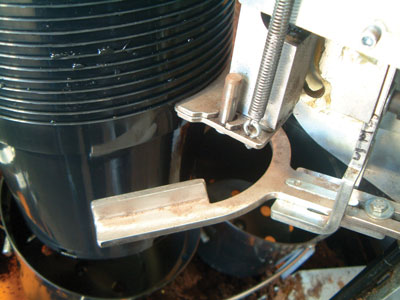
Features
Business
Labour
Special Series Growing Lean #8: Changeup on changeover
March 21, 2012 By Dale Schattenkirk
For any organization that produces more than one product, “changeover time” is something that can be a concern.
For any organization that produces more than one product, “changeover time” is something that can be a concern.
 |
|
| Fig 1. Being prepared for product changes means quicker changeovers. PHOTO COURTESY DALE SCHATTENKIRK Advertisement
|
In the late 1950s, engineering specialist Shigeo Shingo was working to develop a method to understand the impact or ratio between building inventory compared to the lost time from changing the equipment from one product to another.
It was initially based on changing body moulds from one car to another. He said that any changeover should not take more than 10 minutes, thus creating the term SMED – “Single-Minute Exchange of Die.”
So why should you care?
Changeover time – from one plant to another, one pot type to another, different seeds, different pruning activities, etc. – is what we call non-value-added activity. This is a cost that can be avoided, but as we reduce the time it takes to change from one activity to another, it also allows us to respond more quickly to customer needs. Additionally, it reduces inventory because the need to do larger batches is eliminated.
THE EIGHT STEPS TO REDUCING CHANGEOVER TIME
So how do you do it?
There are eight recognized sequential steps to reducing changeover time:
- Separate internal from external setup operations.
- Convert internal to external setup.
- Standardize function, not shape.
- Use functional clamps or eliminate fasteners altogether.
- Use intermediate jigs.
- Adopt parallel operations.
- Eliminate adjustments.
- Mechanization.
Internal activities are anything that is done while the equipment or activity is stopped. That means that the work stops while changeover activities are happening.
Let’s use an example, such as adjusting the potting equipment for a different size of pot.
When the equipment stops, we tend to get our tools, make adjustments by eye, test it, and make more adjustments.
As that’s happening, someone may be off getting the new pots, taking away the old pots, and bringing soil or plants. Sometimes the group decides it’s a good time for a break or starts to discuss different aspects of the process and the changeover is extended.
This typical activity can easily be mitigated by reducing the number of things taking place during the changeover.
FINDING WAYS TO MINIMIZE CHANGEOVER DOWNTIME
As previously mentioned, identify what can be done “external” to the changeover. This means looking at what can be done while the equipment or activity is still going on or running. This would include getting new supplies, removing old materials, and having all tools in place before the changeover happens.
The next step is to have standard work for everyone once the equipment or activity stops.
This means everyone knows exactly what he or she is supposed to be doing until the activity or equipment starts to run again. Once the equipment or activity starts up again, then the cleanup of old supplies is completed. These simple steps can reduce changeover time
dramatically.
To reduce equipment setup time, one of the best things to do is implement jigs, markings and measurements so that everyone knows exactly how to set up the equipment. Fig. 1 has an adjustment bolt, but it is up to the operator to “guess” where it is supposed to go. By having a ruler or indicator on the shaft, the operator would know where to set the shaft for this size of pot and then only minor “tweaks” would need to be done for final setup.
Moving “internal” activities to “external” is the first and most important step to reducing setup time. Once this level of change has been standardized, additional work can be completed if the cost is warranted, including jigs, parallel operations and automation to reduce downtime.
Until next month, keep improving.
| LTS has earned major awards Dale Schattenkirk, president and CEO of LTS Consulting, has over 12 years of experience in consulting, training, development and implementation of Lean Six Sigma methodology. He is an expert in transformational change and works with all levels of the organization from frontline staff to CEOs to teach them how to apply Lean Six Sigma in their settings and what it takes to be a leader in a Lean Six Sigma organization. He and his team were awarded the Lieutenant Governor’s Award of the Saskatchewan Regional group by the Institute of Public Administration of Canada (IPAC), for their success in the implementation of Lean Six Sigma within the Five Hills Health Region. He is also a recipient of Industry Week’s Top 10 Plant Award (team). LTS currently hold provincial contracts in six Canadian provinces. Schattenkirk is a certified Lean Six Sigma Black Belt, an ISO Auditor and a Certified Human Resources Professional (CHRP). |
Print this page